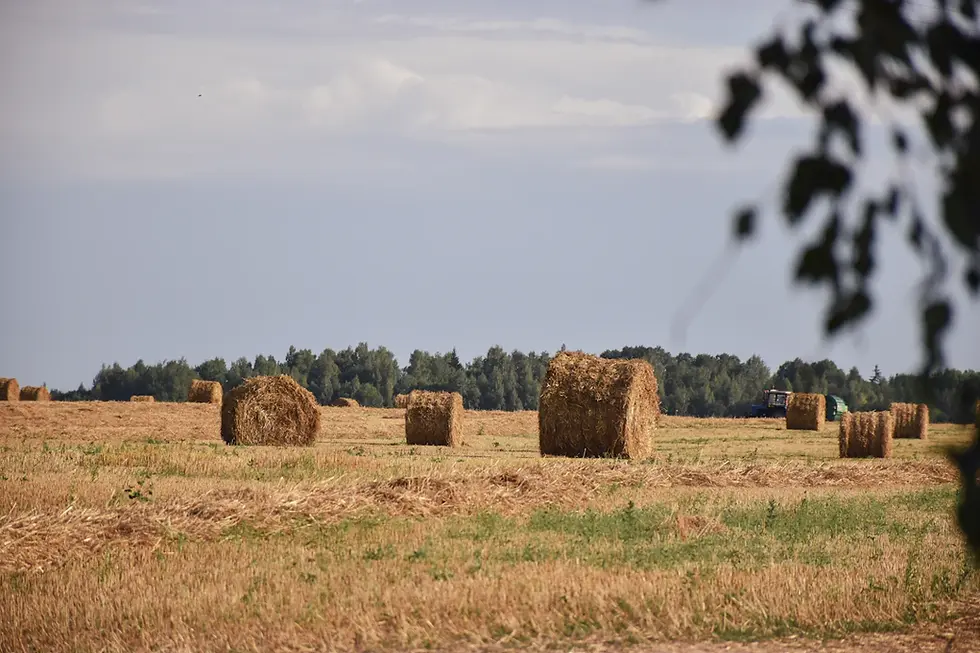Unearthing the Past: Understanding Ancient Agriculture and Its Influence on Modern Farming
- Sep 25
- 5 min read

When we think about agriculture today, images of vast fields of crops and advanced machinery may come to mind. However, the roots of modern farming delve deep into the past, tracing back to the dawn of civilization. Ancient agriculture has shaped our food systems, technology, and societal structures, paving the way for the complex agricultural systems we rely on today. In this blog post, we will explore the fascinating journey of ancient agriculture, how our ancestors sowed the seeds of change, and the enduring relevance of these practices in the modern era.
The Origins of Agriculture
Agriculture, as we know it, began approximately 10,000 years ago during the Neolithic Revolution. This transformation occurred in various locations around the globe, most notably in the Fertile Crescent, a region encompassing parts of modern-day Iraq, Syria, Lebanon, Israel, and Jordan. Early humans transitioned from nomadic hunting and gathering to settled farming communities, marking a significant shift in lifestyle.
Key Developments in Early Agriculture
Domestication of Plants: Ancient agrarians selectively bred wild grasses to cultivate crops like wheat, barley, and legumes. This practice laid the foundation for future crop production and diversity.
Animal Husbandry: The domestication of animals such as sheep, goats, and cattle provided essential resources like meat, milk, and labor, enabling societies to flourish.
Irrigation Systems: Mastering water management through irrigation allowed ancient farmers to cultivate arid lands, significantly increasing agricultural output.
Crop Rotation: Early agriculturalists began recognizing the importance of rotating crops, promoting soil health and maximizing yields over time.
The Spread of Agricultural Techniques
The knowledge and practices of ancient agriculture did not remain stagnant; they spread through trade, conquest, and cultural exchange. As societies interacted, agricultural techniques were shared and adapted to fit new environments.
Regional Variations in Agriculture
Ancient agriculture manifested differently around the world. Here are some notable regional techniques:
1. Mesopotamian Agriculture
The cradle of civilization, Mesopotamia’s agricultural development relied heavily on its river systems, particularly the Tigris and Euphrates. The Sumerians created intricate irrigation systems and utilized crop rotation, advancing agricultural practices significantly.
2. Ancient Egyptian Agriculture
The Nile River's annual flooding deposited rich silt along its banks, enabling Egyptians to cultivate crops like emmer wheat and barley. Their understanding of seasonal cycles allowed them to plant and harvest effectively, contributing to their food surplus.
3. Mesoamerican Agriculture
In central Mexico, the Mayans developed advanced agricultural methods, including milpas (shifting cultivation fields) and terracing in mountainous areas. They domesticated crops such as maize, beans, and squash, which formed the cornerstone of their diet.
4. Chinese Agricultural Practices
China witnessed a significant agricultural revolution during the Shang and Zhou dynasties, with innovations such as iron plows and the use of fertilizers derived from natural resources. Rice cultivation became a critical component of Chinese society.
The Environmental Impact of Ancient Agriculture
While ancient agricultural practices significantly contributed to societal advancement, they also had profound environmental implications. The clearing of forests and expansion of arable land altered ecosystems and affected biodiversity.
Soil Degradation and Sustainability
As communities transitioned to agriculture, soil degradation became an increasingly pressing issue. Early civilizations began to observe the need for sustainable practices to maintain soil fertility:
Use of Organic Matter: Incorporating livestock manure and crop residues helped improve soil nutrients.
Agroforestry: Intercropping with trees was practiced in some regions, providing shade, windbreaks, and additional resources.
Ancestral Knowledge: Indigenous techniques focused on honoring the land, leading to practices aimed at preserving ecological balance.
The Legacy of Ancient Agriculture in Modern Farming
Modern agriculture continues to utilize many principles established by ancient practices. The integration of traditional farming methods with contemporary technology has given rise to approaches such as sustainable agriculture and permaculture.
Innovative Techniques Inspired by the Past
Today's farmers can learn valuable lessons from ancient agricultural practices:
Permaculture: This regenerative approach draws heavily on the idea of observing natural ecosystems. By designing agricultural systems that mimic nature, farmers can create sustainable, self-sufficient environments.
Organic Farming: Many organic practices align with ancient techniques that emphasize soil health, biodiversity, and chemical-free approaches.
Agroecology: Combining science and traditional knowledge, agroecology focuses on optimizing agricultural ecosystems while advancing sustainable practices.
Understanding the Cultural Significance of Agriculture
Agriculture is not only about the production of food; it's deeply intertwined with culture, traditions, and identity. Many ancient societies viewed farming as sacred, ingraining agricultural practices into their cultural frameworks.
The Influence of Agriculture on Society
Economics: Early agricultural developments led to trade and economic systems that fueled growth and the rise of civilizations.
Social Structures: The shift from nomadic lifestyle to settled farming created new societal hierarchies, resulting in a division of labor and the eventual establishment of governments.
Religious Practices: Many cultures held agricultural rituals to honor deities associated with fertility and harvest, illustrating the spiritual connection to farming.
Modern Technology Meets Ancient Wisdom
As we face urgent environmental challenges and a growing global population, combining technological advances with ancient agricultural wisdom becomes essential for sustainable future farming practices. High-tech solutions can enhance productivity while respecting the earth.
Technological Innovations in Agriculture
Precision Agriculture: Utilizing satellite imagery and data analytics, farmers can monitor crop health, optimize resources, and reduce waste.
Vertical Farming: This innovative method aims to increase food production in urban areas, tackling space limitations while using hydroponics and aeroponics to conserve water.
Biotechnology: Genetically modified organisms (GMOs) can provide effective solutions for pest resistance and increased nutritional value, continuing the tradition of improving crop yields.
A Call to Embrace Our Agricultural Heritage
Understanding ancient agriculture offers invaluable insights into how we can interact with the earth sustainably. By acknowledging the wisdom of our ancestors, we can reshape our approach to farming, food production, and environmental stewardship.
Moving Forward: From Past to Present
As we navigate the complexities of modern agriculture, it is imperative to blend the time-tested methods of ancient farming with cutting-edge technology. By appreciating the interplay of history, culture, and innovation, we cultivate a better future for food production that preserves our planet for generations to come.
Join us on this journey to explore the roots of agriculture, and let the lessons of the past inspire us as we work towards a sustainable future, ensuring a harmonious relationship between people and the land, one seed at a time.
FAQs
What is the origin of agriculture?
Agriculture began approximately 10,000 years ago during the Neolithic Revolution, primarily in the Fertile Crescent, where early humans transitioned from nomadic hunting and gathering to settled farming communities.
What were some key developments in ancient agriculture?
Key developments included the domestication of plants and animals, the creation of irrigation systems, and the practice of crop rotation.
How did ancient agricultural techniques spread?
Ancient agricultural techniques spread through trade, conquest, and cultural exchange as societies interacted and adapted practices to fit new environments.
What is the relationship between agriculture and culture?
Agriculture is deeply intertwined with culture, traditions, and identity, influencing economics, social structures, and religious practices in ancient societies.
How can modern farming benefit from ancient agricultural practices?
Modern farming can utilize insights from ancient practices to promote sustainable agriculture, organic farming, and agroecology, blending traditional methods with contemporary technology.




Comments